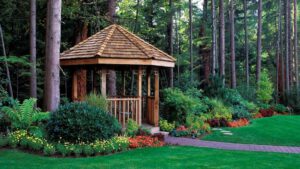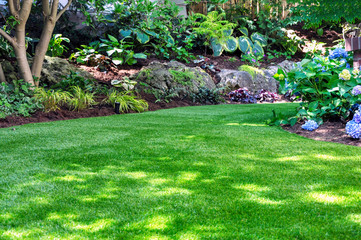Landscaping can be a great way to add beauty to your home. It can also be one of the most rewarding projects you will undertake. Before you begin, it’s important to prepare your yard. You should make a sketch, create a list, and plan your paths. This will ensure that you get the most out of your investment.

Landscaping your yard is a fun and enjoyable project, but it also requires plenty of attention to detail and knowledge of the landscaping industry. Fortunately, there is a landscaping guide that can help you make your yard a more pleasant place to be.
When it comes to landscaping, the most important thing is a good plan. Before you begin, determine how much money you want to spend, how large your yard is, and what kinds of plants you are interested in. You will also need to map out your area and estimate how many pedestrians and vehicles will be passing through. This will help you decide what kinds of tools to buy and how much space you have for future maintenance.
The first step in preparing your yard for spring is removing debris. Debris left on your lawn during the winter can cause ice to form and damage your landscaping. Using a yard waste container is a good way to collect these materials.
In addition, you should test the soil for its pH balance. Having a balanced soil is important to maintaining healthy plants. If you suspect that the soil in your yard is out of balance, you may need to hire a professional to address the problem.
Taking the time to properly prepare your yard for the winter months is a great way to make your yard look better next year. It can also be an important step to surviving a chilly winter.
One of the biggest joys of spring is getting to enjoy your backyard. However, the fun doesn’t stop there. A landscaped yard can enhance your home, and the right landscape planning can give it an edge over its neighbors.
One of the best ways to create beautiful landscape drawings is to enjoy the natural world. This can be done through simple sketches, or by developing your own theme. However, even simple drawings can look better if you follow a few tips. These will also help you improve your landscape drawing skills.
First, take a moment to consider what kind of garden you want to create. Think about your plants, flowers, and other features. You may want to focus on native pollinators, raised food garden beds, wandering paths, or a water feature.
Then, sketch out a plan for your landscaping. Create a rough sketch, then add measurements and details. Remember that your plan should include elements that are already in your garden. Also, think about how you can decorate it.
You can draw your sketch on a piece of regular paper, or a blank sheet. It is best to use a white plastic eraser to clean up your sketch. If you decide to add a new shape to your sketch, you can draw it on tracing paper. Using tracing paper will help you visualize the lines on your sketch.
A good visual composition technique is the 30/70 rule. This rule says that you should divide your drawing into 30% of one kind of element, and 70% of another. For example, if you want to draw a bushy tree, you should try to make it occupy up to 70 percent of your page.
Another technique is to use a viewfinder to get a good view of the area. A viewfinder is a portable frame that can be held up to the scene. By doing this, you can find a great composition.

